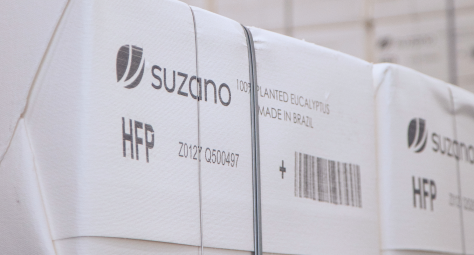sobre o que você deseja falar?


perguntas, sugestões ou problemas técnicos envolvendo a plataforma

informações sobre a empresa


Effluent disposal performance
Total effluent discharge in the surface water category increased by 11% compared to the previous year, which is in line with expectations arising from the start-up of the Ribas do Rio Pardo (MS) plant. As for seawater, the variation was minimal between the last two years. However, the specific discharge was reduced from 23.4 m³/t in 2023 to 23.1 m³/t in 2024. Potential impacts related to effluent discharge are mitigated by the effluent treatment technology used.
Effluent quality
Typically, priority substances of concern are identified based on the requirements set by environmental agencies or the specific control needs of the region where the industrial process operates. We share with our external stakeholders the effluent analysis parameters referenced in the European Commission's Integrated Pollution Prevention and Control (IPPC) international methodology for the pulp and paper sector, published in 2015.
Below are the performance metrics for each parameter, along with a comparison of Suzano's performance against the IPPC reference values.
BOD performance
In 2024, Suzano reported a biological oxygen demand (BOD) load of 8,090.7 tons, reflecting a 10% increase from the 7,330.7 tons reported in 2023. The increase was primarily driven by operations at the Suzano (SP) unit, where cleaning aeration lagoons resulted in a 40% rise in BOD compared to the previous cycle. Despite this increase, the specific indicator remained stable at 0.7 kg/t, well within the international reference standards set by the IPPC, which are between 0.3 and 1.5 kg/t.
COD performance
In 2024, Suzano's chemical oxygen demand (COD) load was 76,611.2 tons, representing an 11% increase compared to 69,325.1 tons reported in 2023. The indicator remained consistent with the previous cycle, reaching 6.4 kg/t in 2024. This figure is below the target set for the industrial units, which is 7 kg/t, and is also lower than the international reference standards established by the IPPC, which range from 8 to 23 kg/t.
OSH performance
In 2024, Suzano reported a total suspended solids (TSS) load of 11,852.7 tons, marking a 34% increase from the 8,817.9 tons recorded in 2023. This increase is expected due to the start-up of the Ribas do Rio Pardo unit. The specific indicator also rose from 0.8 kg/t in 2023 to 0.99 kg/t in 2024. These results fall within the reference range of international standards established by the IPPC, which defines optimal performance as between 0.6 and 1.5 kg/t.
AOX performance
In 2024, there was a 10% increase in the load of organohalogen compounds (AOX) compared to 2023, rising from 439.8 tons to 483.9 tons. This increase aligns with the expected start of operations at the Ribas do Rio Pardo unit. Over the past two years, the specific indicator has remained stable at 0.04 kg/t. This value is well below the minimum reference of international standards (up to 2.5 kg/t) established by the IPPC, as well as the more stringent standards set by the United States Environmental Protection Agency (USEPA) (up to 0.16 kg/t) and our internal target of 0.15 kg/t or lower.
Suzano does not use elemental chlorine in its pulp-bleaching processes. Our operations utilize Elemental Chlorine-Free (ECF) technology, and the Jacareí mill also employs Total Chlorine-Free (TCF) technology.
Phosphorus performance
In 2024, the company's phosphorus load reached 389 tons, reflecting a 37% increase from the 284.5 tons reported in 2023. The specific indicator slightly rose, ending at 0.03 kg/t. These results fall within the reference variation range of the international standards established by the IPPC, which identifies the best performance range of 0.01 to 0.03 kg/t.
Nitrogen performance
The nitrogen load was reduced by 10% from 2023 to 2024, from 1,089 to 982.9 tons. We observed stability in the specific indicator, which remained at 0.10 kg/t. The results are within the reference range of the international standards established by the IPPC, which points to results between 0.10 and 0.25 kg/t as the best performance.
The tables below provide the following information:
| 2020 | 2021 | 2022 | 2023 | 2024 | |
|---|---|---|---|---|---|
| média | média | média | média | média | |
|
tons |
4.780,39 |
6.384,70 |
6.485,49 |
7.330,70 |
8.090,70 |
|
mg/L |
18,57 |
25,24 |
25,45 |
37,70 |
27,65 |
|
kg/t |
0,46 |
0,57 |
0,57 |
0,70 |
0,68 |
| 2020 | 2021 | 2022 | 2023 | 2024 | |
|---|---|---|---|---|---|
| média | média | média | média | média | |
|
tons |
72.609,80 |
74.486,64 |
74.315,66 |
69.325,10 |
76.611,20 |
|
mg/L |
282,12 |
294,41 |
291,62 |
356,10 |
219,90 |
|
kg/t |
6,95 |
6,65 |
6,53 |
6,40 |
6,43 |
| 2020 | 2021 | 2022 | 2023 | 2024 | |
|---|---|---|---|---|---|
| média | média | média | média | média | |
|
tons |
8.227,09 |
8.396,76 |
8.480,34 |
8.817,90 |
11.852,70 |
|
mg/L |
31,97 |
33,19 |
33,28 |
45,30 |
206,20 |
|
kg/t |
0,79 |
0,75 |
0,75 |
0,80 |
0,99 |
| 2020 | 2021 | 2022 | 2023 | 2024 | |
|---|---|---|---|---|---|
| média | média | média | média | média | |
|
tons |
556,46 |
522,18 |
490,01 |
439,80 |
483,90 |
|
mg/L |
2,16 |
2,06 |
1,92 |
2,30 |
1,40 |
|
kg/t |
0,05 |
0,05 |
0,04 |
0,04 |
0,04 |
| 2020 | 2021 | 2022 | 2023 | 2024 | |
|---|---|---|---|---|---|
| média | média | média | média | média | |
|
tons |
336,48 |
284,96 |
281,72 |
284,50 |
389,00 |
|
mg/L |
1,31 |
1,13 |
1,11 |
1,50 |
3,50 |
|
kg/t |
0,03 |
0,03 |
0,02 |
0,03 |
0,03 |
| 2020 | 2021 | 2022 | 2023 | 2024 | |
|---|---|---|---|---|---|
| média | média | média | média | média | |
|
tons |
1.309,30 |
1.066,03 |
1.213,01 |
1.089,00 |
982,90 |
|
mg/L |
5,09 |
4,21 |
4,76 |
5,60 |
2,90 |
|
kg/t |
0,13 |
0,10 |
0,11 |
0,10 |
0,08 |
| 2020 | 2021 | 2022 | 2023 | 2024 | ||||||
|---|---|---|---|---|---|---|---|---|---|---|
| Total | In areas of water stress² | Total | In areas of water stress² | Total | In areas of water stress² | Total | In areas of water stress² | Total | In areas of water stress² | |
|
Surface water |
174.723.236,65 |
23.303.984,81 |
173.135.366,05 |
23.247.908,59 |
173.195.872,33 |
22.765.500,30 |
194.665.634,00 |
0,00 |
215.482.526,34 |
0,00 |
|
Sea water³ |
51.049.305,24 |
0,00 |
56.620.327,24 |
0,00 |
58.876.216,66 |
0,00 |
58.791.347,00 |
0,00 |
59.345.886,00 |
0,00 |
|
Third-party water ⁴ |
n/d |
n/d |
n/d |
n/d |
n/d |
n/d |
3.676,80 |
1.277,60 |
4.493,00 |
1.923,00 |
|
Total |
225.772.541,89 |
23.303.984,81 |
229.755.693,29 |
23.247.908,59 |
232.072.088,99 |
22.765.500,30 |
253.460.657,80 |
1.277,60 |
274.832.905,34 |
1.923,00 |